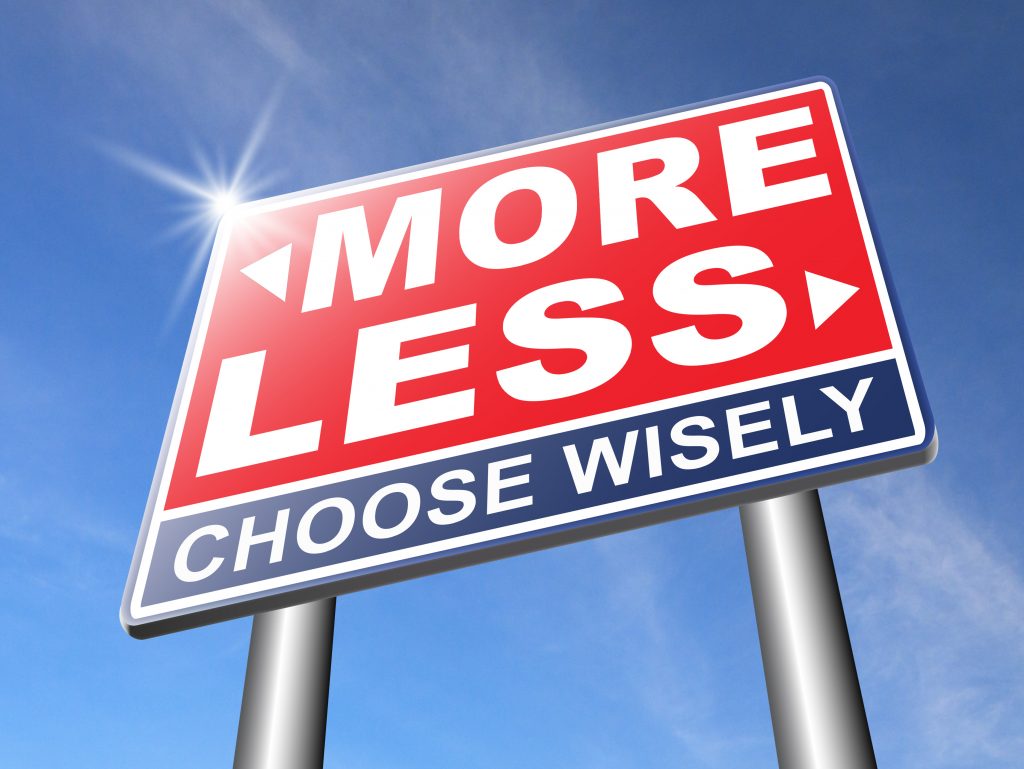If you start reading a lot of business books, you’ll quickly notice that there are common themes and ideas that come up over and over.
As an example: Patrick Lencioni writes a lot about the power of vulnerability-based leadership, which is also a central theme in Extreme Ownership (by Jocko Willink and Leif Babin). And it’s also referenced in Daniel Coyle’s book The Culture Code and pretty much anything written by Brené Brown.
My takeaway is that when you start seeing the same ideas from different sources and in different contexts, you’ve likely tapped into something that’s important and fundamental — in other words, something that you should be paying attention to.
The idea that less is more
Another common theme that I’ve noticed a lot lately is the fairly simple idea that if you truly want to get ahead, you need to narrow your focus and do less.
In Greg McKeown’s book Essentialism, he calls it “the disciplined pursuit of less but better,” and he believes it is the fundamental idea for long-term success.
In Mike Michalowicz’s books – especially The Pumpkin Plan and his latest book Clockwork, your ability to focus your business and your efforts down to only the MOST important products and activities means the difference between a successful business and one that continually struggles.
And there are many more – Gary Keller’s book The One Thing (fairly self-explanatory), Gino Wickman’s Traction, Richard Koch’s The 80/20 Rule and The 4 Disciplines of Execution all share this idea — just to name a few.
Of course, all of those books take a different angle and include other ideas, but the central concept is that one of the big mistakes that we all make at some point is that we try to do too much. We focus on way too many things, and, not surprisingly, we don’t make very much progress.
What should you give up doing?
One of the challenges we face is that things we do start to accumulate over time. Growth, complexity and the unwillingness to say “no” to things means that next week, month or year we’ll end up with more things on our plate than we had last year.
Which means it’s almost certain that you’re currently doing some things that aren’t all that beneficial. You’re attending events, working with certain customers, doing some regular tasks that aren’t helping you succeed in the long run.
Here’s my challenge to you: Review your calendar for the last week (maybe go back 2 or 3 weeks if it’s not been a typical week). Where have you been spending time that isn’t an obvious “must do” situation?
Don’t worry about how difficult it might be to stop doing something; just try to honestly evaluate if it’s a clear winner (or not). One way to help make this determination is to ask yourself: Knowing what I know now, would I start doing this activity today?. If your answer is anything but an emphatic “yes,” then it’s probably a good candidate to cut.
“If it’s not a hell yeah, then it’s a no!”
– Derek Sivers
Realistically, this exercise will uncover several things that you’re currently spending time on that you should be cutting. However, it can be really difficult to make a lot of big changes at once, so start small: Identify one or two things that really stand out to you and find a way to stop doing them.
If it’s a meeting or an obligation to someone else, find a way to gracefully bow out (possibly over time). If it’s a regular task, either find a way to delegate it or consider just not doing it (would there be an impact)? It’s never easy to trim things that are part of your routine — but if you don’t, you’ll eventually be overwhelmed and unable to focus on what’s really important.
What do you think? Is this an exercise you can do? Have you already done this recently? What did you cut out? We’d love to hear your thoughts.
Shawn Kinkade, Kansas City Business Coach


